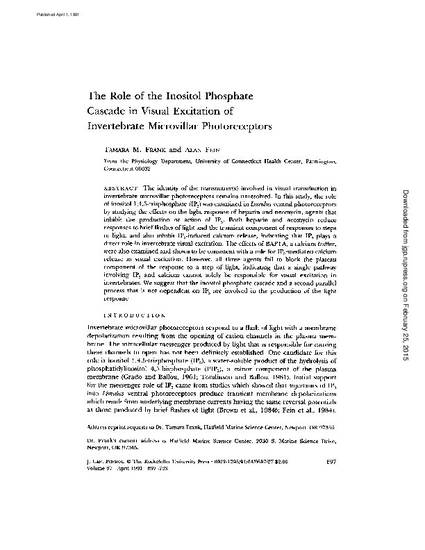
The identity of the transmitter(s) involved in visual transduction in invertebrate microvillar photoreceptors remains unresolved. In this study, the role of inositol 1,4,5-trisphosphate (IP3) was examined in Limulus ventral photoreceptors by studying the effects on the light response of heparin and neomycin, agents that inhibit the production or action of IP3. Both heparin and neomycin reduce responses to brief flashes of light and the transient component of responses to steps of light, and also inhibit IP3-induced calcium release, indicating that IP3 plays a direct role in invertebrate visual excitation. The effects of BAPTA, a calcium buffer, were also examined and shown to be consistent with a role for IP3-mediated calcium release in visual excitation. However, all three agents fail to block the plateau component of the response to a step of light, indicating that a single pathway involving IP3 and calcium cannot solely be responsible for visual excitation in invertebrates. We suggest that the inositol phosphate cascade and a second parallel process that is not dependent on IP3 are involved in the production of the light response.
Available at: http://works.bepress.com/tamara-frank/42/

©1991 Rockefeller University Press